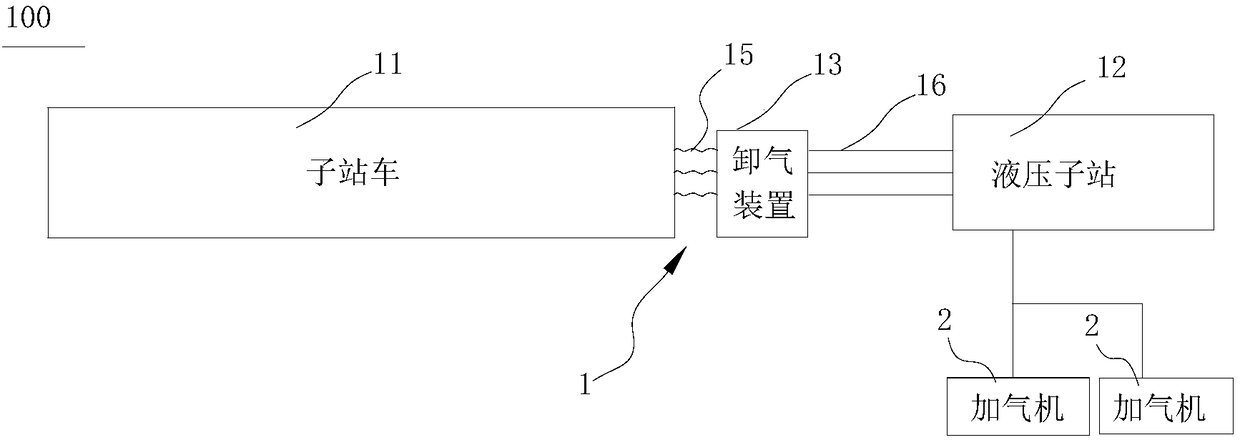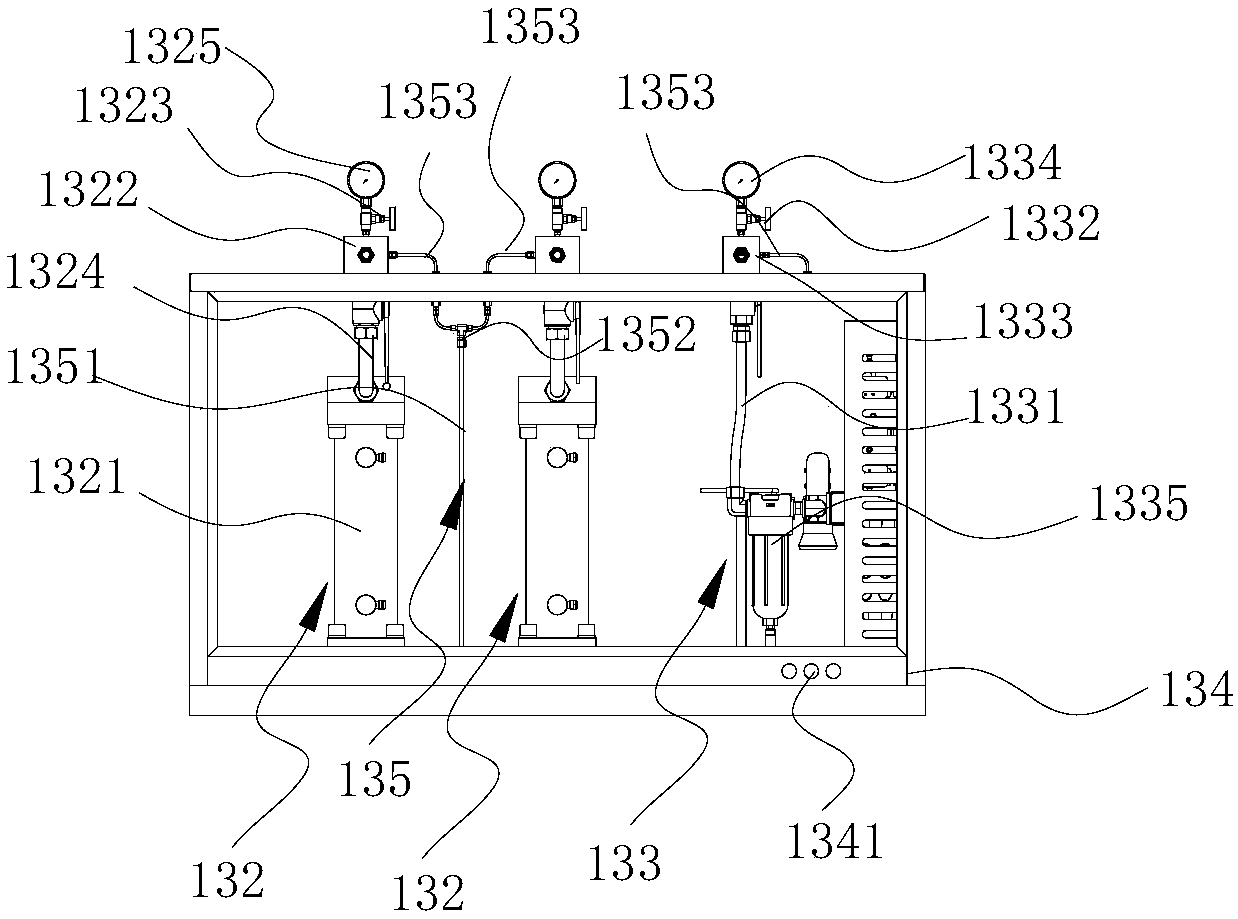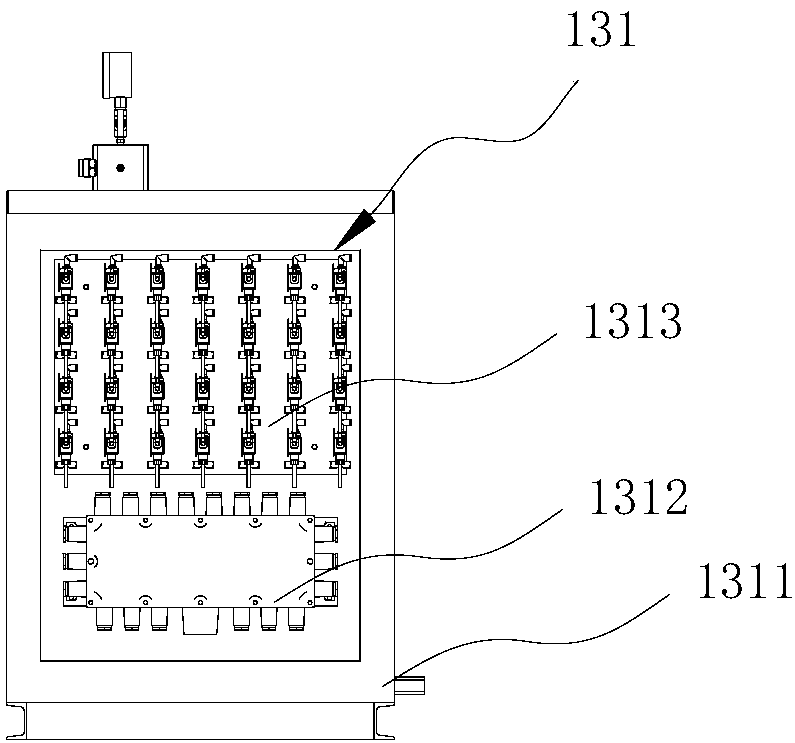Hydraulic refueling substation for gas-fueled vehicles and oil-returning and gas-releasing system thereof
A technology of gas filling sub-station and hydraulic sub-station, which is applied in pressure vessels, fixed-capacity gas storage tanks, gas processing/storage effects, etc., can solve the problems of high residual pressure, large gas loss, long unloading hose, etc. The effect of length reduction, gas loss reduction, and residual pressure reduction
- Summary
- Abstract
- Description
- Claims
- Application Information
AI Technical Summary
Problems solved by technology
Method used
Image
Examples
Embodiment Construction
[0043] In order to further illustrate the principle and structure of the present invention, preferred embodiments of the present invention will now be described in detail with reference to the accompanying drawings.
[0044] Such as figure 1 As shown, it is a block diagram of the hydraulic natural gas vehicle filling sub-station of the present invention. The hydraulic natural gas vehicle refueling substation 100 includes an oil return and unloading system 1 and a gas dispenser 2. The gas dispenser 2 is connected to the gas storage tank of the oil return and unloading system 1 through pipelines. The gas machine 2 transports compressed natural gas, and the gas filling machine 2 injects the compressed natural gas into the gas cylinder of the vehicle.
[0045] The oil return and gas unloading system 1 includes a sub-station vehicle 11 (also known as a sub-station trailer), a hydraulic sub-station 12 and an unloading device 13 .
[0046] The sub-station car 11 includes a trailer ...
PUM
 Login to View More
Login to View More Abstract
Description
Claims
Application Information
 Login to View More
Login to View More - R&D
- Intellectual Property
- Life Sciences
- Materials
- Tech Scout
- Unparalleled Data Quality
- Higher Quality Content
- 60% Fewer Hallucinations
Browse by: Latest US Patents, China's latest patents, Technical Efficacy Thesaurus, Application Domain, Technology Topic, Popular Technical Reports.
© 2025 PatSnap. All rights reserved.Legal|Privacy policy|Modern Slavery Act Transparency Statement|Sitemap|About US| Contact US: help@patsnap.com



